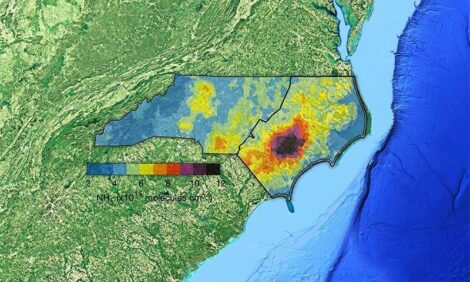



Do Not Forget About the Basics: Heterosis
Crossbreeding is incorporated into most commercial breeding programs in the swine industry, unlike other animal production industries (e.g. dairy and beef to a certain extent). One of the greatest benefits to crossbreeding is the phenomenon of heterosis, or hybrid vigor, writes Nick Boddicker, Ph.D.Heterosis is the counterpart to inbreeding depression, which occurs when related animals are bred together. Different breeds tend to have different allele frequencies across the genome. When these 2 breeds are bred together, the allele frequencies become intermediate in the offspring. In genetic terms, this is called an increase in heterozygosity and contributes to heterosis.
Heterosis is defined as the increase in performance of the offspring compared to the average of the parents. It is quantifiable and typically expressed as a percentage.
As an example, let’s assume two purebred maternal populations and the trait of interest is litter size. The Landrace (L) population has an average litter size of 13 and Yorkshire (Y) has an average of 14.
The average of the two parent breeds is 13.5. The LxY F1’s have an average litter size of 14.5. Therefore, the percent increase from the parent average (heterosis) is (14.5-13.5)/13.5*100 = 7.4% heterosis.
The above example calculated the exact percentage of heterosis. However, it is most common to compare the heterosis for different mating schemes using a common standard, which is typically the heterosis in an F1 and is considered 100%. The mating of any 2 different breeds yields 100% heterosis on the standardized scale.
On the standardized scale, it is essential to know the percent breed composition of the animals in the breeding program. Building onto our previous example, what is the expected heterosis when a third breed (e.g. Duroc) is mated to the LxY F1? Again, this is 100% heterosis because the F1 female is York and Landrace and does not contain any Duroc in the breed composition.
There are three additional types of breeding schemes commonly used in the swine industry and they are backcrosses (mating the F1 to one of the parent breeds), mating of F1’s together and results in F2s, and composite lines (e.g. 3-breed composite). All of these breeding schemes result in less heterosis than that achieved by an F1. Simply stated, when the same breed is present in the sire and dam, heterosis will not be 100%.
Heterosis can be broken down into individual and maternal heterosis. Everything discussed above is referring to individual heterosis. Maternal heterosis is heterosis of maternal traits such as litter size or milking ability. F1 females will have larger litters compared to their purebred parents. If the dam is an F1, then maternal heterosis is 100%. Below is a table summarizing the standardized heterosis for different breeding schemes.
Maximizing heterosis, both individual and maternal, is only achieved through structured breeding schemes.

* Assuming breed composition is 25% Landrace, 25% Yorkshire, and 50% Duroc
In the era of genomics and highly sophisticated genetic techniques, we must not forget about the basics. Heterosis is a simple concept and is free to the producer that utilizes crossbreeding. It results in a bump up in production and reproduction that in turn brings the producer increased profits.
Genesus has built its breeding program on this simple concept. Genesus has all registered purebred Duroc, Landrace, and Yorkshire nucleus stock. Therefore, all aspects of our breeding program maximizes (100%) heterosis, both individual and maternal all the way to the commercial animal.
Because all of the purebred animals are registered, it is guaranteed that the Genesus system of an F1 female (York x Landrace) and a Duroc sire maximizes heterosis. Heterosis is not passed on from parent to progeny and therefore must be maximized through the breeding program. Another benefit to this breeding scheme is uniformity of the commercial stock because all commercial animals from a full Genesus program have the same breed composition (25% L, 25% Y, and 50% Duroc).
July 2015







